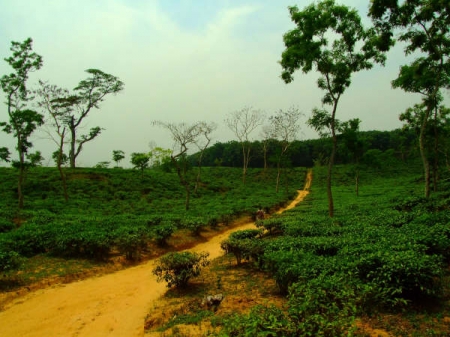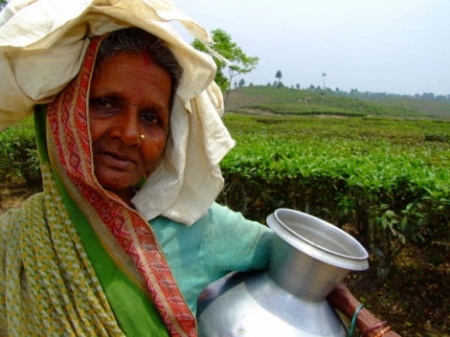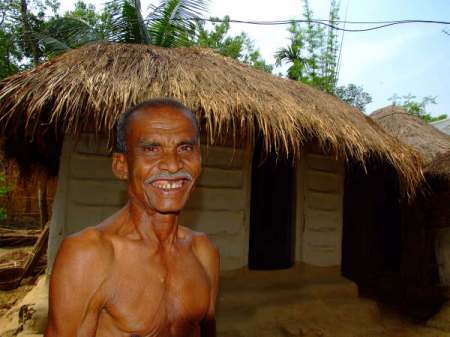Tea Plantation History

History of Bangladesh tea industry dates back to around 1823 when tea started to be grown for commercial purposes in the Assam forests. Tea plantation in Bengal developed concurrently with that in the northeastern part of India during the early nineteenth century. In 1855, the Assam indigenous tea plant was established in Chandghani Hills of Sylhet.Near about the same time, wild tea was found among Khasiand Jainta Hills. Around 1840, tea plantation started in Chittagong. The first commercial tea plantation was established in 1857 in Mulnichera in Sylhet.
At present, the total number of tea estates are 163 and the total number of tea factories are 114. The total garden area is 115,629.76 ha. The tea is a huge source of revenue for the government of Bangladesh.(www.teaboard.gov.bd)
Tea is a very popular drink for the people all over the world. We all go to the market,buy packets of tea,come back home, make them and drink them,simple.But have you ever wondered where this tea comes from? At what cost do we get to drink this tea? Have you ever wondered about the tea plantation workers and the lives that they lead?
Origin of the Tea Workers

Most of the tea estates are located in the northeast region of Bangladesh. The first tea garden was established by the Duncan Brothers. Since then all the tea gardens have been established by clearing jungles. Those who did the jungle clearing were non-locals brought by Duncan from Assam, Bihar, Madras, Orissa and other places in India.
Back home they were told that they would arrive at a “lovely garden in the hill country where they would look after trees with leaves of pure gold which would fall if you (they) shook them” (Jones 1986:11).
After they settled in this unknown country they realised that the story of the golden leaves was a lie and it remains a mystery to them till date.
The tea worker with different ethnic identities are people who are less-talked-of and forgotten. They are not well aware of their origins. Their lives in Bangladesh are confined to the tea gardens and they do not interact much with people of other ethnic identities. They do not speak their language perfectly and most of them are illiterate.
As they are a socially excluded group, they are a very easy target for exploitation by the profiteers from the tea industry.
Tea-The Industry

Tea is an important export item in Bangladesh.
Bangladesh ranks tenth among the ten largest tea-producing and exporting countries in the world. In the year 2000, the country’s tea production was 1.80% of the 2,939.91 million kg produced worldwide.
Most of the 163 tea estates in Bangladesh are located in the North-eastern region of Bangladesh-Maulvi Bazar, Hobiganj, Sylhet, Brahmanbaria districts. There are a few number of tea estates in Panchagar District and in Chittagong,a South-eastern district.
Owners of tea gardens include both foreign and local companies. While four Sterling companies own 27 estate, Bangladeshi companies and individuals own the rest of the tea gardens. The four foreign companies are James Finlay, Duncan Brothers, Deundi Tea Company and The New Sylhet Tea Estate.
All the 163 tea estates are managed by five different categories of management:
(i) Sterling companies
(ii) National Tea company
(iii) Bangladesh Tea Board
(iv) Bangladeshi Private Limited Companies
(v) Bangladeshi Proprietors
The estates are categorised into three according to their production capacities. They are:
- Category A: All the ‘A’ category estates that have the highest productivity belong to the British companies (fully or partially).
- Category B: The Bangladeshi government, Bangladeshi tea companies or Bangladeshi individuals own this category of estates.
- Category C: The family owned small and low productive estates belong to this category. Wages and working conditions are at their worst in the tea estates under this category.
Tea Workers in Captive Situation

In 1854 when the tea workers (Santals, Oraons,Munda etc.) from different states of India first arrived they each signed a four-year contract that eventually obliged them to remain on the tea gardens for generations. That was the beginning of hard labour, erosion of cultural identity and captivity that never came to an end. Illiterate, they didn’t understand what the document contained when they signed it. This ignorance led to a life full of suffering for them and for their children.
A century later, they still find themselves illiterate. Their poor housing conditions, low wages, long working hours, social discrimination, and de facto restriction on free movement deprive thwm of many basic human needs and rights that every human being must have for personal and societal progress. These conditions make sure that the children of tea workers can do nothing else but become tea workers. Deprived, exploited and alienated the tea workers live an inhumane life.
Dependency

The tea workers are so much cornered that they depend solely on the companies for food, medicine, accomodations, education, etc. They do not have choices about their life and amenities. That is because they do not have a social standing in Bangladesh.
The only social relationship that exists between the tea workers and the Bengalis is one of business. The Bengalis own majority of the shops in the area. On the weekly holiday,Sunday, some of the tea workers work in Bengali houses. But the Bengalis would hardly allow them into their houses. They treat them as untouchables. Glasses, plates, or other equipment are generally kept separate for the tea workers. However, among themselves whatever their identity or origin, the tea workers maintain quite good relations.
Language

The tea workers are completely cut off from their origins in India. They can only partly recall the languages of their forefathers. They speak “a sort of distorted Hindi” that passes as a common language on the tea estates. They also speak in Deshali, which is a mixture of Bengali and language of Orissa. Their accents while speaking in Deshali testify their cultural corrosion.
Relationship of Tea Workers With Managers

Social and economic distance of the tea workers with their Bengali supervisors including the managers is much wider. Francis Rolt, a British writer, gives a vivid description of the severe discriminatory conduct of the hierarchy towards the tea workers: “the tea gardens are managed as an extreme hierarchy: the managers live like gods, distant, unapproachable, and incomprehensible. Some even begin to believe that they are gods, that they can do exactly what they like.”
“Managers have anything up to a dozen laborers as their personal, domestic servants. They are made to tie the managers shoe lace, to remind them that they are under managerial control and that they are bound to do whatever they are asked,” writes another British human rights activist, Dan Jones.
Are there any constitutions to protect the tea workers?

The condition of the forlorn tea workers depict many kinds of abuse, discrimination and deprivation that are very difficult to overcome. There are constitutional safeguards,laws and mechanisms intended to ensure human dignity, but for the tea workers human dignity is only a dream. Their conditions violate the maximum provisions of the Bangladesh Constitution, different instruments, laws and rules that commit social, economic and human dignity. The SAARC Social Charter, in the hands of the South Asian States, upholds the same commitment. It’s implementation is a big challenge indeed.
Living Conditions of the Tea Workers and the SAARC Social Charter

“We live in place worse than that of the officers’ pets (at the estates). Many of us have only a thin jute mattress to sleep on,” describes a tea worker about her living condition. Living conditions provided to tea workers are generally outrageous and clear infringement of the Bangladesh Constitution. One committment that the SAARC Social Charter sets for the South Asian States is to enable its citizens “satisfy basic human needs and to realise his or her personal dignity, safety and creativity.”
No comments:
Post a Comment